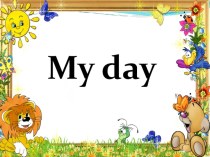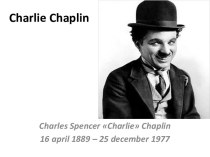- Главная
- Разное
- Бизнес и предпринимательство
- Образование
- Развлечения
- Государство
- Спорт
- Графика
- Культурология
- Еда и кулинария
- Лингвистика
- Религиоведение
- Черчение
- Физкультура
- ИЗО
- Психология
- Социология
- Английский язык
- Астрономия
- Алгебра
- Биология
- География
- Геометрия
- Детские презентации
- Информатика
- История
- Литература
- Маркетинг
- Математика
- Медицина
- Менеджмент
- Музыка
- МХК
- Немецкий язык
- ОБЖ
- Обществознание
- Окружающий мир
- Педагогика
- Русский язык
- Технология
- Физика
- Философия
- Химия
- Шаблоны, картинки для презентаций
- Экология
- Экономика
- Юриспруденция
Что такое findslide.org?
FindSlide.org - это сайт презентаций, докладов, шаблонов в формате PowerPoint.
Обратная связь
Email: Нажмите что бы посмотреть
Презентация на тему Стилистические приемы в произведениях К. Мэнсфилд
Содержание
- 2. Biography of Katherine Mansfield
- 3. Katherine Mansfield (Kathleen Beauchamp) was
- 4. The Mansfield family moved from
- 5. She became enamoured
- 6. She moved to London
- 7. She met fellow writer
- 8. She rapidly wearied of
- 9. During her first year in
- 10. After a brief reunion
- 11. Mansfield's time in Bavaria
- 12. Having returned to London, Mansfield met
- 13. In January 1914, they moved
- 14. By the remembered stream my brother stands
- 15. Mansfield entered into her
- 16. "Miss Brill" the bittersweet story
- 17. Mansfield spent her last
- 18. Mansfield suffered a fatal
- 19. Mansfield proved to be
- 20. Katherine Mansfield is widely
- 21. Collections In a German Pension (1911), The
- 22. Short stories "The Woman At The Store"
- 23. “Sun and Moon”
- 24. “Sun and Moon” is a
- 25. Characters Sun Moon Nurse Annie Mother Father
- 26. The plot The children, Sun
- 27. Major themethe gap between children and adults
- 28. Stylistic devices
- 29. Simile:the flower pots looked like funny awfully
- 30. Repetition:And more and more things kept coming;Round
- 31. Epithets: Two silver lions,
- 32. Metonymy:In the afternoon the chairs came, a
- 33. Hyperbole:He’s a perfect little ton of bricks.Antithesa:Moon
- 34. Literary significance The text is written
- 35. A Cup of Tea
- 36. “A Cup of Tea”
- 37. Characters Rosemary Fell, a rich woman the
- 38. The plot Rosemary Fell,
- 39. Major themesclass consciousness feminism
- 40. Stylistic devices
- 41. Simile“It was like something out of a
- 42. AnaphoreSupposing she took the girl home? Supposing
- 43. Epithets…beautiful big bedroom, the fire leaping on
- 44. Simile “She seemed to stagger like
- 45. Metonymy“…thin birdlike shoulders…” tells us that this woman was fragile.
- 46. Epithets“…the effect of that slight meal was
- 47. Epithets“…she’s so astonishingly pretty.”
- 48. Repetition“I can’t bear it. I can’t bear
- 49. The Doll's House
- 50. “The Doll's House” is a
- 51. The plot Mrs.
- 52. Major theme Class Consciousness : the
- 53. Epithets:… an exquisite little amber lamp with a white globe.
- 54. Simile:…was like a little slab of toffee.Like two little stray cats they followed across the courtyard…
- 55. Simile:Lil hudding alone like her mother……our Else was still as a stone.
- 56. Hyperbole: The father and mother dolls…were really too big for the doll’s house.
- 57. Anadiplosis: …“Got something to tell you at playtime.” Playtime came and Isabel was surrounded.
- 58. Repetitions:But perfect, perfect little house!“It’s true – it’s true – it’s true,” she said.
- 59. Repetitions:…at the Kelveys eating out of their paper, always by themselves, always listening…
- 60. Anaphora: “Watch! Watch me! Watch me now!”
- 61. Anaphora: Now she could
- 62. Metonymy: The Kelveys came nearer, and beside them walked their shadows, very long…
- 63. Metaphor:Dead silence.But now that she had frightened those little rats of Kelveys…
- 64. Oxymoron: …Wild with joy.
- 65. Personification:It seems to smile to Kezia, to say, “I live here”.
- 66. Literary significance The text is
- 67. The Garden Party
- 68. “The Garden Party” is
- 69. Characters Mrs. Sheridan, Laura Sheridan, one of
- 70. The plot The Sheridan
- 71. Major themesClass consciousness. Laura feels a certain
- 72. Katherine Mansfield used
- 73. Metonymy“The daisy plants had been seemed to
- 74. Oxymoron:“fearfully affected”;Comparison:“bushes bowed down as though they had been visited by archangels”.
- 75. Literary significance The text is
- 76. The Fly
- 77. "The Fly" is a
- 78. Characters Mr. Woodifield, an old and infirm
- 79. Woodifield, an old
- 80. Major themes The inevitability of
- 81. Скачать презентацию
- 82. Похожие презентации






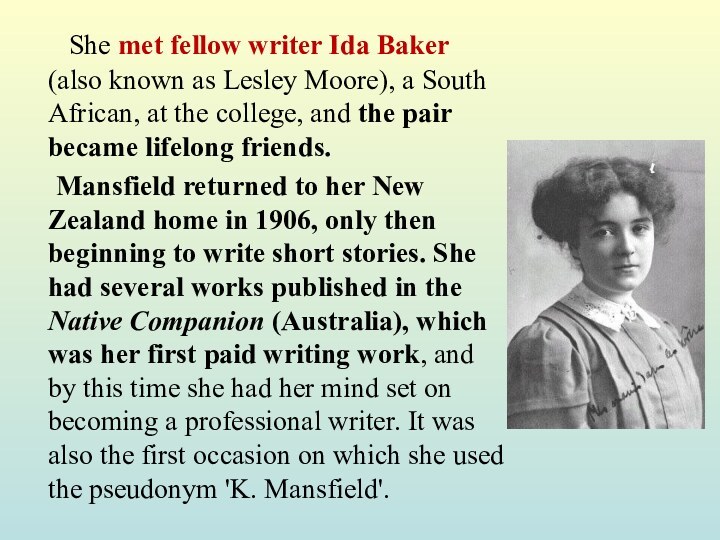






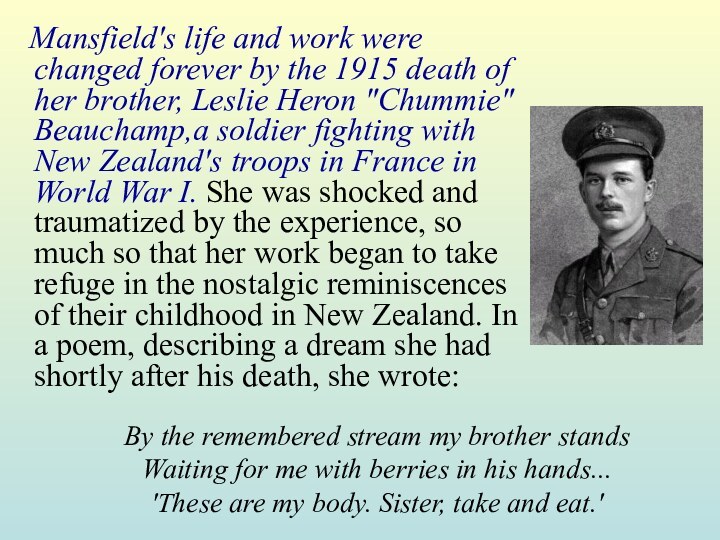

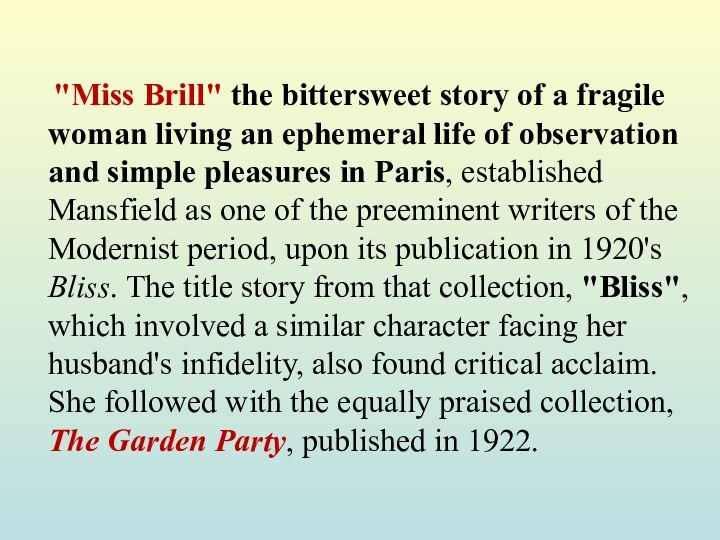




















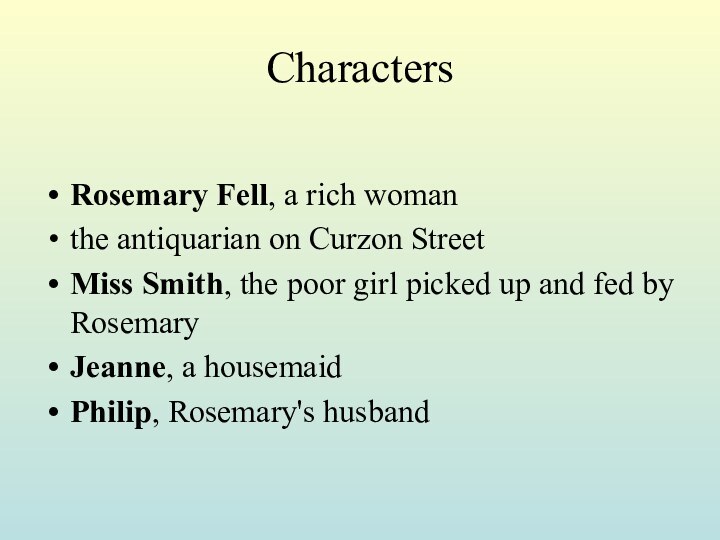





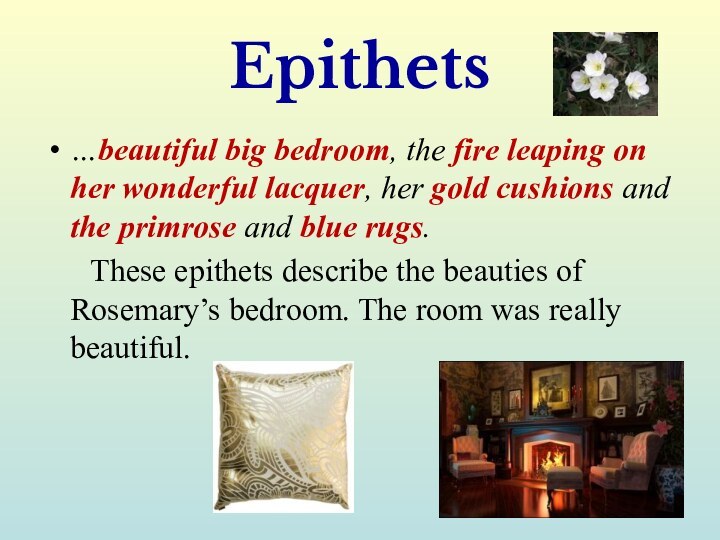








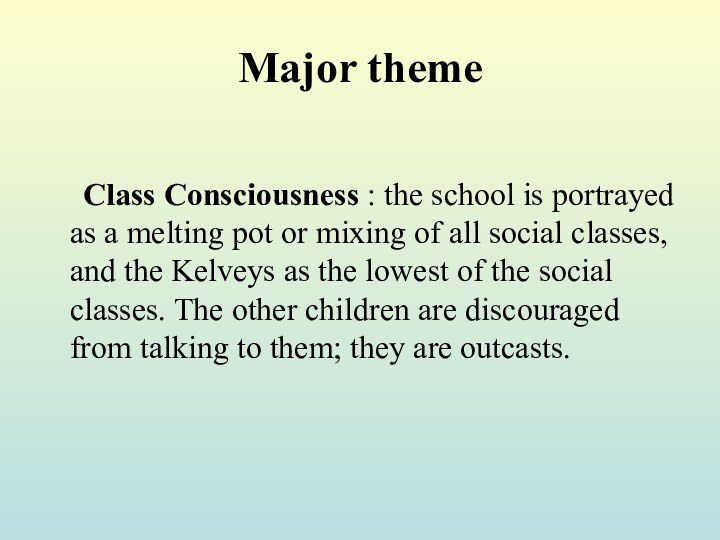








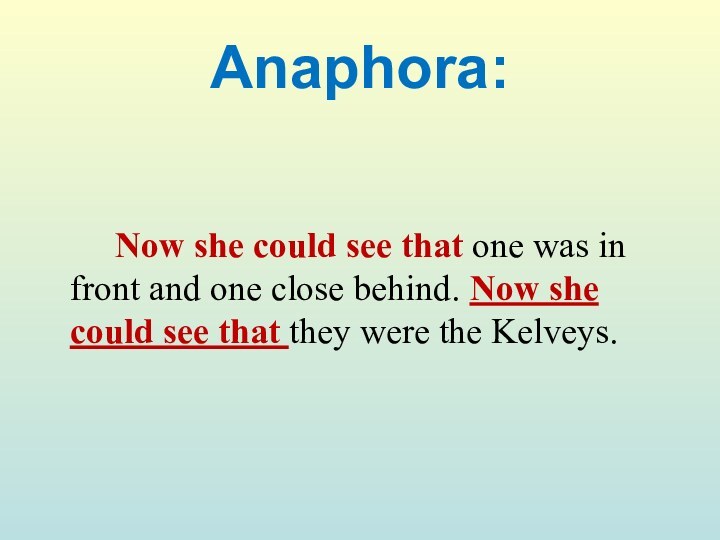
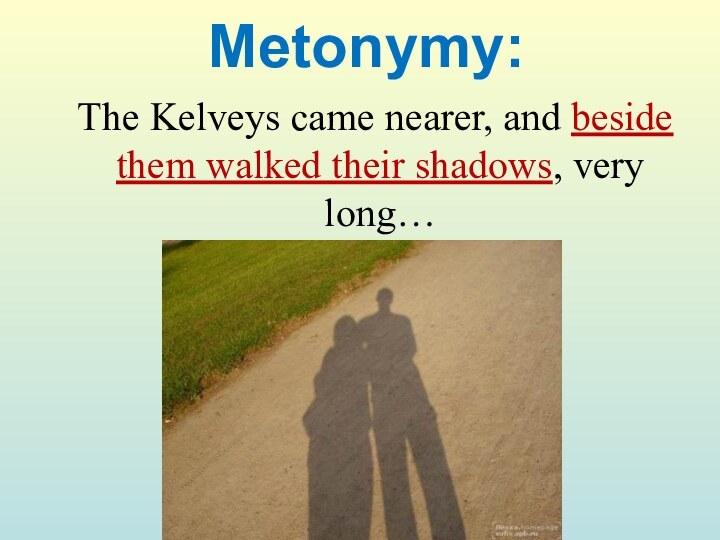




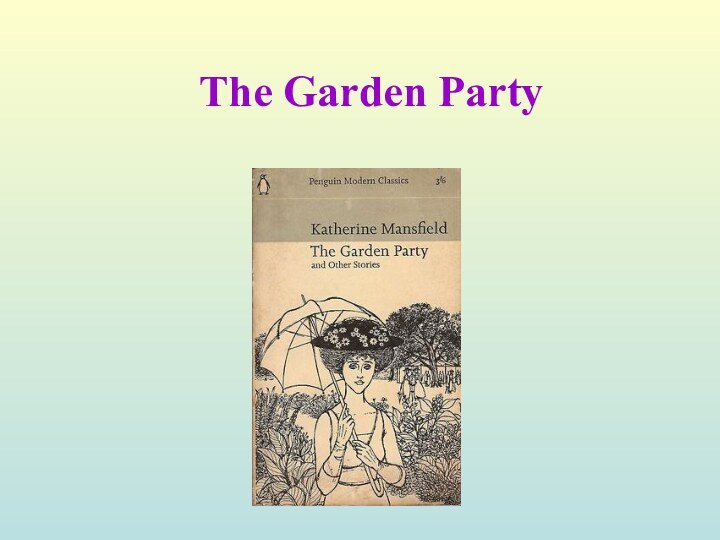







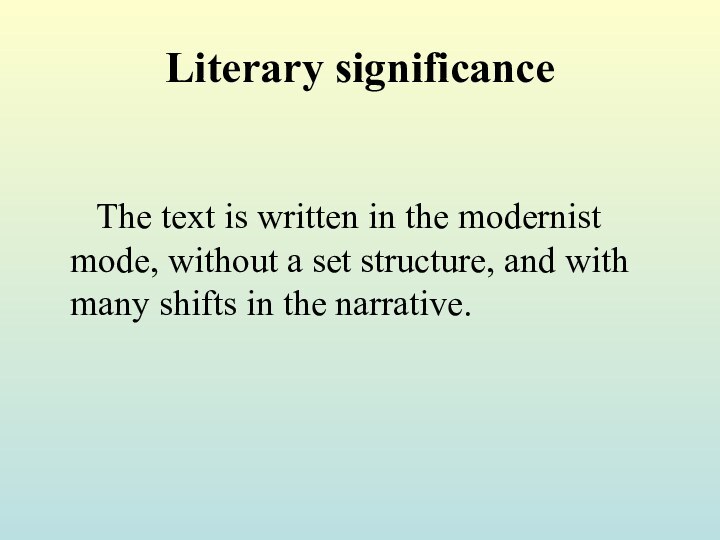






Слайд 4 The Mansfield family moved from Thorndon
to Karori in 1893, where Mansfield would spend the
happiest years of her childhood; she later used her memories of this time as an inspiration for the "Prelude" story.Her first published stories appeared in the High School Reporter and the Wellington Girls' High School magazine in 1898 and 1899.
Слайд 5 She became enamoured with
a cellist, Arnold Trowell (Mansfield herself was an accomplished
cellist, having received lessons from Trowell's father), in 1902, although the feelings were largely unreciprocated.Mansfield wrote, in her journals, of feeling alienated to some extent in New Zealand, and, in general terms, of how she became disillusioned due to the repression of the Māori people—who were often portrayed in a sympathetic or positive light in her later stories, such as “How Pearl Button Was Kidnapped”.
Слайд 6 She moved to London in
1903, where she attended Queen's College, along with her
two sisters. Mansfield recommenced playing the cello, an occupation that she believed, during her time at Queen's, she would take up professionally,but she also began contributing to the school newspaper, with such a dedication to it that she eventually became editor during this period.Слайд 7 She met fellow writer Ida
Baker (also known as Lesley Moore), a South African,
at the college, and the pair became lifelong friends.Mansfield returned to her New Zealand home in 1906, only then beginning to write short stories. She had several works published in the Native Companion (Australia), which was her first paid writing work, and by this time she had her mind set on becoming a professional writer. It was also the first occasion on which she used the pseudonym 'K. Mansfield'.
Слайд 8 She rapidly wearied of the
provincial New Zealand lifestyle, and of her family, during
this time, and two years later headed again for London. Her father sent her an annual subsidy of £100 for the rest of her life.In later years, she would express both admiration and disdain for New Zealand in her journals, and she was never able to visit there again, partly due to her tuberculosis.
Слайд 9 During her first year in London,
she embarked on various relationships and published very little
- only one poem and one story. Pregnant to Garnet Trowell, the son of her childhood music teacher in New Zealand, she married George Bowden, a singing teacher considerably older than herself, whom she left almost immediately.Слайд 10 After a brief reunion with
Garnet, Mansfield's mother arrived in 1909. She quickly had
her daughter despatched to Bad Wörishofen, in Bavaria, Germany. Mansfield had miscarried the child after attempting to lift a suitcase on top of a cupboard, although it is not known whether her mother knew of this miscarriage when she left shortly after arriving in Germany (Mansfield was subsequently cut out of her mother's will).Слайд 11 Mansfield's time in Bavaria was
to have a significant effect on her literary outlook.
She was introduced to the works of Anton Chekhov, a writer who proved to have greater influence upon her writing in the short-term than Wilde, on whom she had been fixated during her earlier years. She returned to London in January 1910, and had over a dozen works published in A.R. Orage's The New Age, a socialist magazine and highly-regarded intellectual publication. Her experiences of Germany formed the foundation of her first published collection, In a German Pension,in 1911, a work that was lauded by a number of critics. The most successful story from this work was Frau Brechenmacher Attends a Wedding.Слайд 12 Having returned to London, Mansfield met John
Middleton Murry, the Oxford scholar and editor of Rhythm,
in 1911. They became lovers and were later to marry in 1918. Mansfield became a co-editor of Rhythm, later the short lived Blue Review, in which more of her works were published. She and Murry lived in various houses in England and briefly in Paris. The Blue Review folded, Murry was declared a bankrupt and they returned to London where Murry worked on the New Statesman.Слайд 13 In January 1914, they moved to
Paris, with the hope that the change of setting
would make writing for both of them easier. Mansfield wrote only one story during her time there (Something Childish But Very Natural). Mansfield had an affair in 1914, when she embarked on a brief relationship with French writer Francis Carco; her visiting him, in Paris in February 1915, was retold in one of her short stories, An Indiscreet Journey.Слайд 14 By the remembered stream my brother stands Waiting for
me with berries in his hands... 'These are my body.
Sister, take and eat.' Mansfield's life and work were changed forever by the 1915 death of her brother, Leslie Heron "Chummie" Beauchamp,a soldier fighting with New Zealand's troops in France in World War I. She was shocked and traumatized by the experience, so much so that her work began to take refuge in the nostalgic reminiscences of their childhood in New Zealand. In a poem, describing a dream she had shortly after his death, she wrote:
Слайд 15 Mansfield entered into her most
prolific period of writing post-1916, which began with several
stories, including Mr Reginald Peacock's Day and A Dill Pickle being published in The New Age. Woolf and her husband, Leonard, who had recently set up Hogarth Press, approached her for a story, and Mansfield presented "Prelude", a story she had begun writing in 1915 as The Aloe. The story is centred around a family of New Zealanders moving home, with little external plot. Although it failed to reach a wider audience, and was little noticed and criticized upon its release in 1918, it later became one of Mansfield's most celebrated works.Слайд 16 "Miss Brill" the bittersweet story of
a fragile woman living an ephemeral life of observation
and simple pleasures in Paris, established Mansfield as one of the preeminent writers of the Modernist period, upon its publication in 1920's Bliss. The title story from that collection, "Bliss", which involved a similar character facing her husband's infidelity, also found critical acclaim. She followed with the equally praised collection, The Garden Party, published in 1922.Слайд 17 Mansfield spent her last years
seeking increasingly unorthodox cures for her tuberculosis. In February
1922, she consulted the Russian physician Ivan Manoukhin. His "revolutionary" treatment, which consisted of bombarding her spleen with X-rays, caused Mansfield to develop heat flashes and numbness in her legs.Слайд 18 Mansfield suffered a fatal pulmonary
haemorrhage in January 1923, after running up a flight
of stairs to show Murry how well she was. She died on January 9 and was buried in a cemetery in the Fontainebleau District in the town of Avon.Слайд 19 Mansfield proved to be a
prolific writer in the final years of her life,
and much of her prose and poetry remained unpublished at her death. Murry took on the task of editing and publishing her works.His efforts resulted in two additional volumes of short stories in 1923 (The Dove's Nest) and in 1924 (Something Childish), the publication of her Poems, The Aloe, as well as a collection of critical writings (Novels and Novelists) and a number of editions of Mansfield's previously unpublished letters and journals.
Слайд 20 Katherine Mansfield is widely considered
one of the best short story writers of her
period. A number of her works, including "Miss Brill", "Prelude", "The Garden Party", "The Doll's House", and later works such as “The Fly”, are frequently collected in short story anthologies. Mansfield also proved ahead of her time in her adoration of Russian playwright and short story writer Anton Chekhov, and incorporated some of his themes and techniques into her writing.
Слайд 21
Collections
In a German Pension (1911),
The Garden Party:
and Other Stories (1922),
The Doves' Nest: and Other
Stories (1923), Bliss: and Other Stories (1923)
The Montana Stories (1923) (Republished in 2001 by Persephone Books)
Poems (1923),
Something Childish (1924),first published in the U.S. as The Little Girl
The Journal of Katherine Mansfield (1927, 1954), The Letters of Katherine Mansfield (2 vols., 1928–29)
The Aloe (1930),
Novels and Novelists (1930),
The Short Stories of Katherine Mansfield (1937)
The Scrapbook of Katherine Mansfield (1939)
The Collected Stories of Katherine Mansfield (1945, 1974), Letters to John Middleton Murry, 1913-1922 (1951),
The Urewera Notebook (1978),
The Critical Writings of Katherine Mansfield (1987),
The Collected Letters of Katherine Mansfield (4 vols., 1984–96)
Vol. 1, 1903–17,
Vol. 2, 1918–19,
Vol. 3, 1919–20,
Vol. 4, 1920–21,
The Katherine Mansfield Notebooks (2 vols., 1997),
Слайд 22
Short stories
"The Woman At The Store" (1912)
"How
Pearl Button Was Kidnapped" (1912)
"Millie" (1913)
"Something Childish
But Very Natural" (1914) "The Little Governess" (1915)
"Pictures" (1917)
"Feuille d'Album" (1917)
"A Dill Pickle" (1917)
"Je ne parle pas français" (1917)
"Prelude" (1918)
"An Indiscreet Journey" (1920)
"Bliss" (1920)
"Miss Brill" (1920)
"Psychology" (1920)
"Sun and Moon" (1920)
"The Wind Blows" (1920)
"Mr Reginald Peacock's Day" (1920)
"Marriage à la Mode" (1921)
"The Voyage" (1921)
"Her First Ball" (1921)
"Mr and Mrs Dove" (1921)
"Life of Ma Parker" (1921)
"The Daughters of the Late Colonel" (1921)
"The Stranger" (1921)
"The Man Without a Temperament" (1921)
"At The Bay" (1922)
"The Fly" (1922)
"The Garden Party" (1922)
"A Cup of Tea" (1922)
"The Doll's House" (1922)
"A Married Man's Story" (1923)
"The Canary"" (1923)
"The Singing Lesson"
"An Ideal Family"
Слайд 24 “Sun and Moon” is a short
story. It was first published in the Athenaeum on
1 October 1920, and later reprinted in Bliss and Other Stories.
Слайд 25
Characters
Sun
Moon
Nurse
Annie
Mother
Father
the pianist
Minnie, the new cook.
Nellie, the housemaid.
Слайд 26
The plot
The children, Sun and
Moon, are hanging around the house while a party
is being prepared. They play games, then are sent off to bed. The party wakes them up; their parents find them out of their beds and instead of scolding them, they let them go downstairs for a bite - but Sun starts sobbing because Moon has eaten the nut from the centerpiece (the moment of ruined perfection, a recurring theme in Mansfield's work), and they are sent off to bed again.
Слайд 29
Simile:
the flower pots looked like funny awfully nice
hats nodding up the path;
there was a man helping
in a cap like a blancmange;and you look like a sweet little cherub of a picture;
there was a loud, loud noise of clapping from downstairs, like when it rains.
Слайд 30
Repetition:
And more and more things kept coming;
Round and
round he walked with his hands behind the back;
Oh,
the ducks! Oh, the lambs! Oh, the sweets! Oh, the pets!
Слайд 31
Epithets:
Two silver lions, tiny
birds, winking glasses and shining plates and sparkling knives
and forks…
Слайд 32
Metonymy:
In the afternoon the chairs came, a whole
big cart full of little gold ones with their
legs in the air;She gave them each an almond finger…;
…clean tiny games.
Слайд 33
Hyperbole:
He’s a perfect little ton of bricks.
Antithesa:
Moon laughed,too;
she always did the same as other people. But
Sun didn’t want to laugh.Metafor:
…the salt cellars were tiny birds drinking out of basins.
Слайд 34
Literary significance
The text is written in
the modernist mode, without a set structure, and with
many shifts in the narrative.Слайд 36 “A Cup of Tea” is
a short story. It was first published in the
Story-Teller in May 1922.It later appeared in The Dove's Nest and Other Stories.
Слайд 37
Characters
Rosemary Fell, a rich woman
the antiquarian
on Curzon Street
Miss Smith, the poor girl picked up
and fed by Rosemary Jeanne, a housemaid
Philip, Rosemary's husband
Слайд 38
The plot
Rosemary Fell, a
young, wealthy woman, goes shopping at a florist's and
in an antique shop. Before going to the car, Rosemary is approached by Miss Smith, a poor girl who asks for enough money to buy tea. Instead, Rosemary drives the girl to her plush house. At the Fells' home, Miss Smith eats her fill. She then begins to tell Rosemary of her life when the husband, Philip, comes in. Although initially surprised, Philip recovers and asks to speak to Rosemary alone. In the library, Philip conveys his disapproval. When Rosemary resists dismissing Miss Smith, Philip tries another, more successful, tactic. He plays to Rosemary's jealousy by telling her how pretty Miss Smith is. Rosemary retrieves three pound notes, and, presumably, sends the girl away. This dismissal is a far cry from Rosemary's first vow to "Be frightfully nice to her" and to "Look after her." Later, Rosemary goes to her husband and informs him "Miss Smith won't dine with us tonight." She first asks about the antique box from the morning, but then arrives at her true concern: She quietly asks him, "Am I pretty?"
Слайд 41
Simile
“It was like something out of a novel
by Dostoevsky, this meeting in the dusk.”
Katherine Mansfield shows us suddenness of this event.
Слайд 42
Anaphore
Supposing she took the girl home? Supposing she
did do one of those things she was always
reading about or seeing on the stage, what would happen?This stylistic device tells us that Rosemary doubted in her decision.
Слайд 43
Epithets
…beautiful big bedroom, the fire leaping on her
wonderful lacquer, her gold cushions and the primrose and
blue rugs.These epithets describe the beauties of Rosemary’s bedroom. The room was really beautiful.
Слайд 44
Simile
“She seemed to stagger like a
child…” shows us that Miss Smith was really helpless
and weak.
Слайд 46
Epithets
“…the effect of that slight meal was marvelous;
a new being, a light, frail creature with tangled
hair, dark lips, deep lighted eyes…”These epithets tell us that Miss Smith was more vivid after tea. I think she was born one more time.
Слайд 47
Epithets
“…she’s so astonishingly pretty.”
Said these words Philip wanted to make
Rosemary nervous, that she went back the poor woman.
Слайд 48
Repetition
“I can’t bear it. I can’t bear it.
I can’t bear it no more.”
Katherine Mansfield
wanted to show us that the poor woman was in despair of her life.Слайд 50 “The Doll's House” is a short
story. It was first published in The Nation &
the Anthenaeum on 4 February 1922, and later appeared in The Dove's Nest and Other Stories.An alternative title used by Mansfield in other editions was At Karori.
Слайд 51
The plot
Mrs. Hay
has given a doll's house to the Burnell children;
it is minutely described, with especial emphasis on a lamp inside of it, which the youngest girl, Kezia, thinks is the best part of the doll house. The next morning they cannot wait to show it off to their school friends; Isabel bossily says she will be the one to decide who is allowed to come and see it in the house as she is the eldest. The Kelveys, two poor girls, Lil and "our" Else, will not be allowed to do so; Aunt Beryl talks Kezia out of letting them. Later, Isabel and two of her friends, Emmie Cole and Lena Logan, taunt the Kelveys about their low social status. Soon afterwards Kezia impulsively decides to show them the house anyway; Aunt Beryl, worried about an insisting letter from a certain Willie Brent, walks in on them, shoos away the Kelveys, scolds Kezia, then feels better. The Kelveys have managed to see the lamp though and Else smiles joyfully which is rare.And the story ends with them being silent once more.
Слайд 52
Major theme
Class Consciousness : the school
is portrayed as a melting pot or mixing of
all social classes, and the Kelveys as the lowest of the social classes. The other children are discouraged from talking to them; they are outcasts.
Слайд 54
Simile:
…was like a little slab of toffee.
Like two
little stray cats they followed across the courtyard…
Слайд 57
Anadiplosis:
…“Got something to tell you at playtime.”
Playtime came and Isabel was surrounded.
Слайд 58
Repetitions:
But perfect, perfect little house!
“It’s true – it’s
true – it’s true,” she said.
Слайд 59
Repetitions:
…at the Kelveys eating out of their paper,
always by themselves, always listening…
Слайд 61
Anaphora:
Now she could see
that one was in front and one close behind.
Now she could see that they were the Kelveys.
Слайд 66
Literary significance
The text is written
in the modernist mode, with minute details and haphazard
narrative voices.Слайд 68 “The Garden Party” is a
short story. It was first published in the Saturday
Westminster Gazette on 4 February 1922, then in the Weekly Westminster Gazette on 18 February 1922. It later appeared in The Garden Party and Other Stories.
Слайд 69
Characters
Mrs. Sheridan,
Laura Sheridan, one of three
girls(main)
The workers, who put up a marquee in
the garden Meg Sheridan, a second daughter
Jose Sheridan, a third daughter
Laurie, a brother
Kitty Maitland, a friend of Laura and a party guest
Sadie, a female house servant
Hans, a male house servant
the florist, who delivers lilies ordered by Mrs Sheridan
Cook, a cook
Godber's man, the delivery-man who brings in the cakes
Mr. Scott, a lower-class neighbor who has just died
Em Scott, the deceased's widow.
Unnamed referred to as 'Mrs. Scott's sister'
Слайд 70
The plot
The Sheridan family
is preparing to host a garden party. Laura is
supposed to be in charge, but has trouble with the workers who appear to know better, and her mother (Mrs. Sheridan) has ordered lilies to be delivered for the party without Laura's approval. Her sister Jose tests the piano, and then sings a song in case she is asked to do so again later. After the furniture is rearranged, they learn that their neighbor Mr. Scott has died. While Laura believes the party should be called off, neither Jose nor their mother agrees. The party is a success, and later Mrs. Sheridan decides it would be good to bring a basket full of leftovers to the Scotts' house. She summons Laura to do so. Laura is shown into the poor neighbors' house by Mrs. Scott's sister, then sees the widow and her late husband's corpse. The sight of his dead body brings her to tears, and she runs off back to her own house, where she falls sobbing into her brother's arms.
Слайд 71
Major themes
Class consciousness. Laura feels a certain sense
of kinship with the workers and again with the
Scotts. Her mother thinks it would embarrass them to receive flowers. An omniscient narrator also explains that as children Laura, Jose, Meg and Laurie were not allowed to go near the poor's dwellings, which spoil their vista.Illusion versus reality. Laura is stuck in a world of high class housing, food, family and garden parties. She then discovers her neighbour from a lower class has died and she clicks back to reality upon discovering death.
Sensitivity and insensitivity Death and Life. The writer masterfully handles the theme of death and life in the short story. The realization of Laura that life is simply marvellous shows death of human being in a positive light. Death and life co-exist together and death seems to Laura merely a sound sleep far away from troubles in human life.
Слайд 72 Katherine Mansfield used the
metaphor “the blue was veiled with a haze of
light gold” that proved if they had ordered the weather they couldn’t have had more perfect day.
Слайд 73
Metonymy
“The daisy plants had been seemed to shine”,
this metonymy underlines it was awfully beautiful plants;
“stamped on
each cheek”;“she flies”.
Слайд 74
Oxymoron:
“fearfully affected”;
Comparison:
“bushes bowed down as though they had
been visited by archangels”.
Слайд 75
Literary significance
The text is written
in the modernist mode, without a set structure, and
with many shifts in the narrative.Слайд 77 "The Fly" is a short
story. The text was first published in The Nation
& Athenaeum on 18 March 1922 and it later appeared in The Dove's Nest and Other Stories.
Слайд 78
Characters
Mr. Woodifield, an old and infirm man,
who is only allowed to leave his house on
Tuesdays. He lives with his wife and daughter.The boss, a well-off friend of his, who has lost a son to World War I.
Macey, the office boy.
The fly the symbol of the story
Gertrude, Mr. Woodifield's daughter
Слайд 79 Woodifield, an old and
infirm gentleman, is talking to the boss, his friend,
who is five years older than he is and 'still going strong'. The latter apparently enjoys showing off his redecorated office to Woodifield, with new furniture and electric heating, yet an old picture of his deceased son. Woodifield wants to tell the boss something, but cannot remember what it was, when the boss offers him some whisky. After drinking, his memory is refreshed and Woodifield talks about a recent visit that "the girls" (his two daughters) made to their sons' graves. We now come to know that both their sons had died in the war. After Woodifield leaves, the boss sits down at his table, calls the office boy and tells him that he does not want to be disturbed. He is extremely perturbed at the sudden reference to his dead son, but does not manage to weep. He looks at his son's photo, and then notices a fly that was struggling to get out of his inkpot. The boss helps it out of the inkpot and observes how it dries itself, with some amount of admiration. Just when the fly is dry and safe, the boss has an idea and starts playing with the fly by dropping ink on it. When it dies, he throws the blotting paper with it into the wastepaper basket, and asks his servant for more blotting paper. The boss then has no recollection of what he was talking about before the fly.Plot













